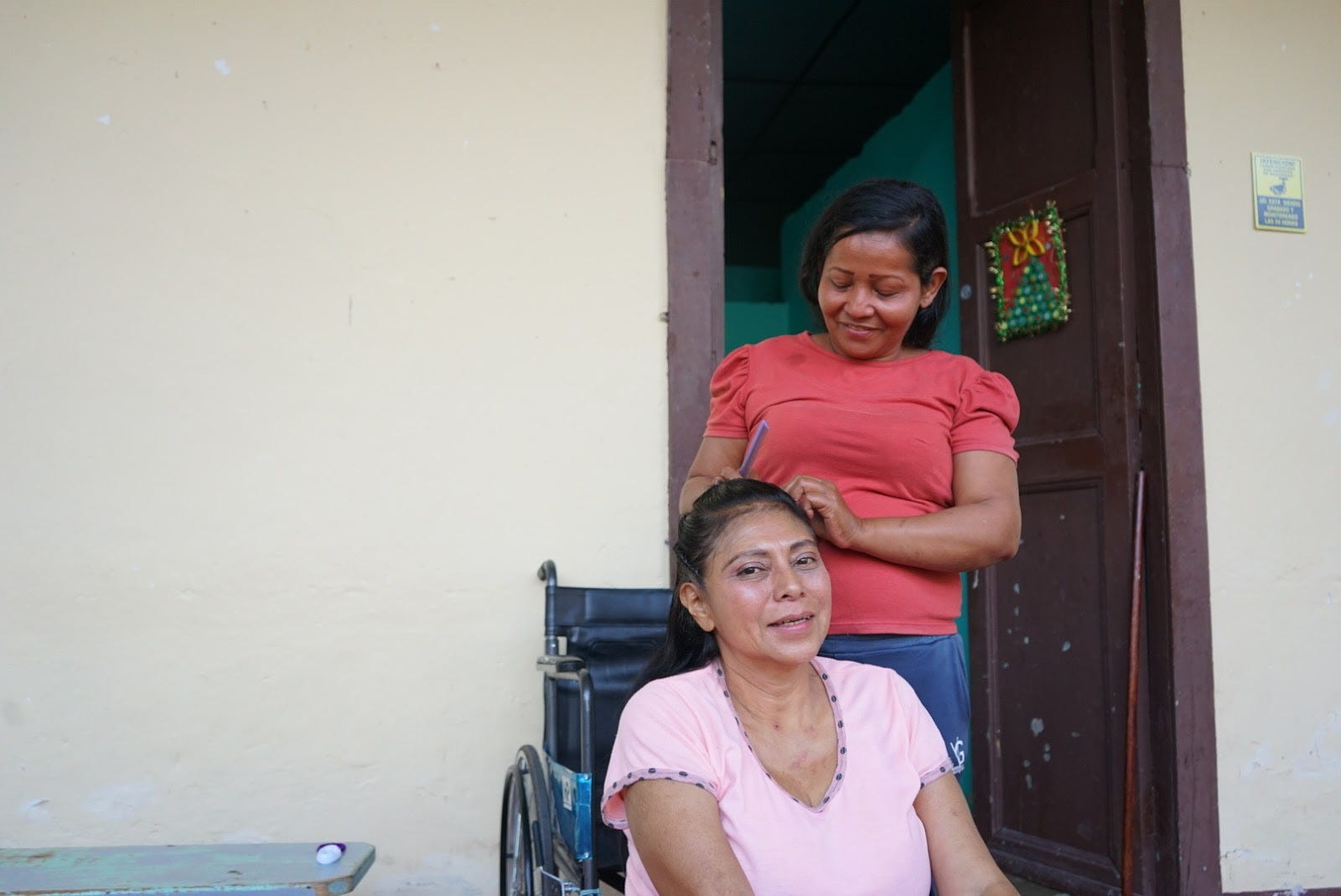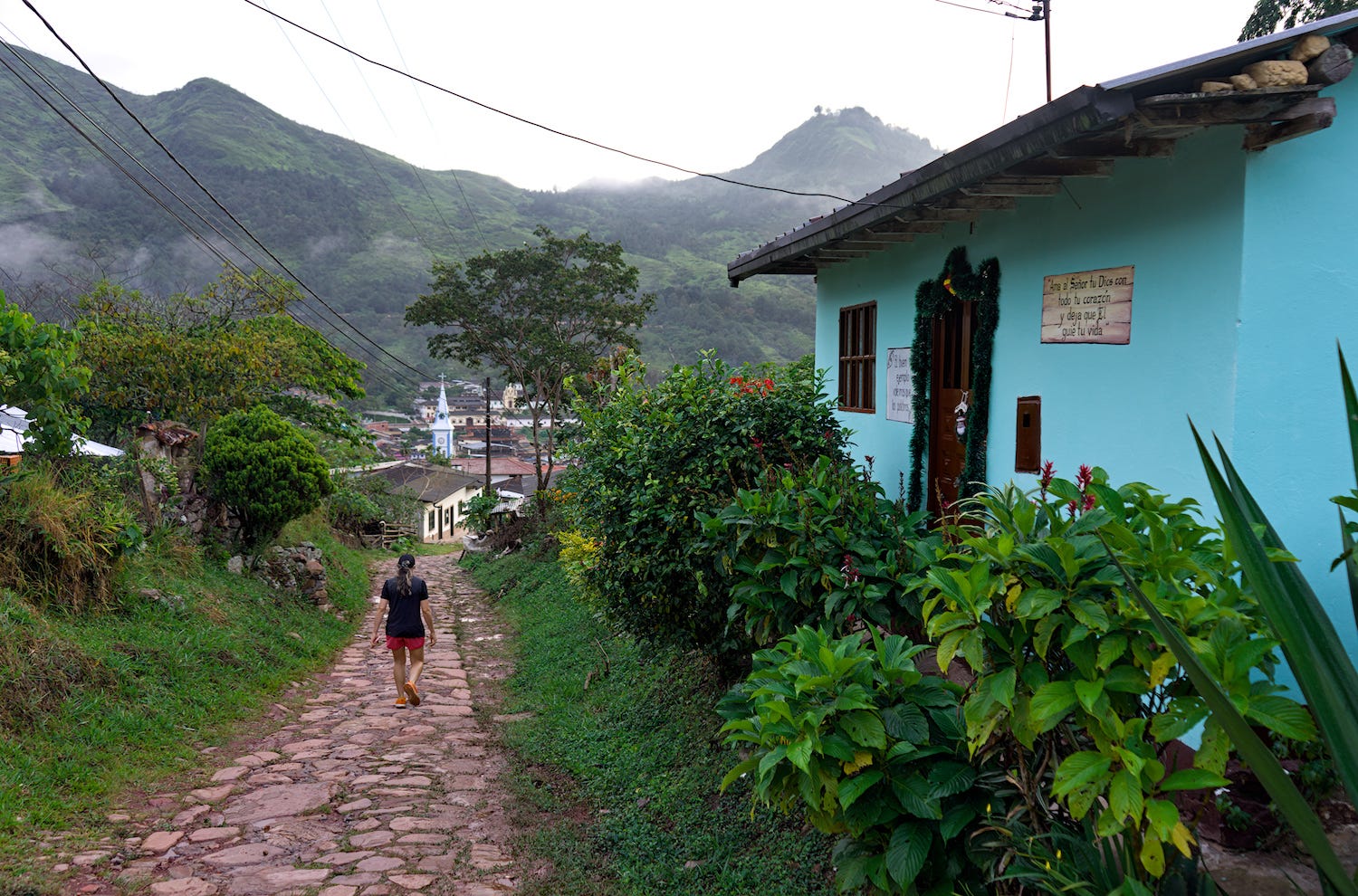Between a Refuge and a Prison
Riding through the Colombian Andes, we stumble upon a place of exile and healing.
Written by Anastasia Austin, edited by Douwe den Held. A version of this article was first published in Hidden Compass.
Angela doesn’t look like she has leprosy. As she stands above her seated friend, pleating colorful bands into her hair, she most resembles a girl getting ready for the high school dance.
But they are both patients of a devastating disease that, without effective treatment, wreaks havoc on a person’s skin and peripheral nerves.
Hansen’s disease — commonly known as leprosy — has largely been forgotten. I was one of many who assumed that it had been eradicated long ago before stumbling upon it in the remote town of Contratación.
Here, nestled in the Colombian Andes, the government once exiled the sick far from the rest of society, giving them their own currency, and imprisoning them behind armed guards. Today, the guards are gone, and the town is home to one of only two leprosy treatment centers in the country.
For Angela and many others, it is a refuge but also a place of isolation.
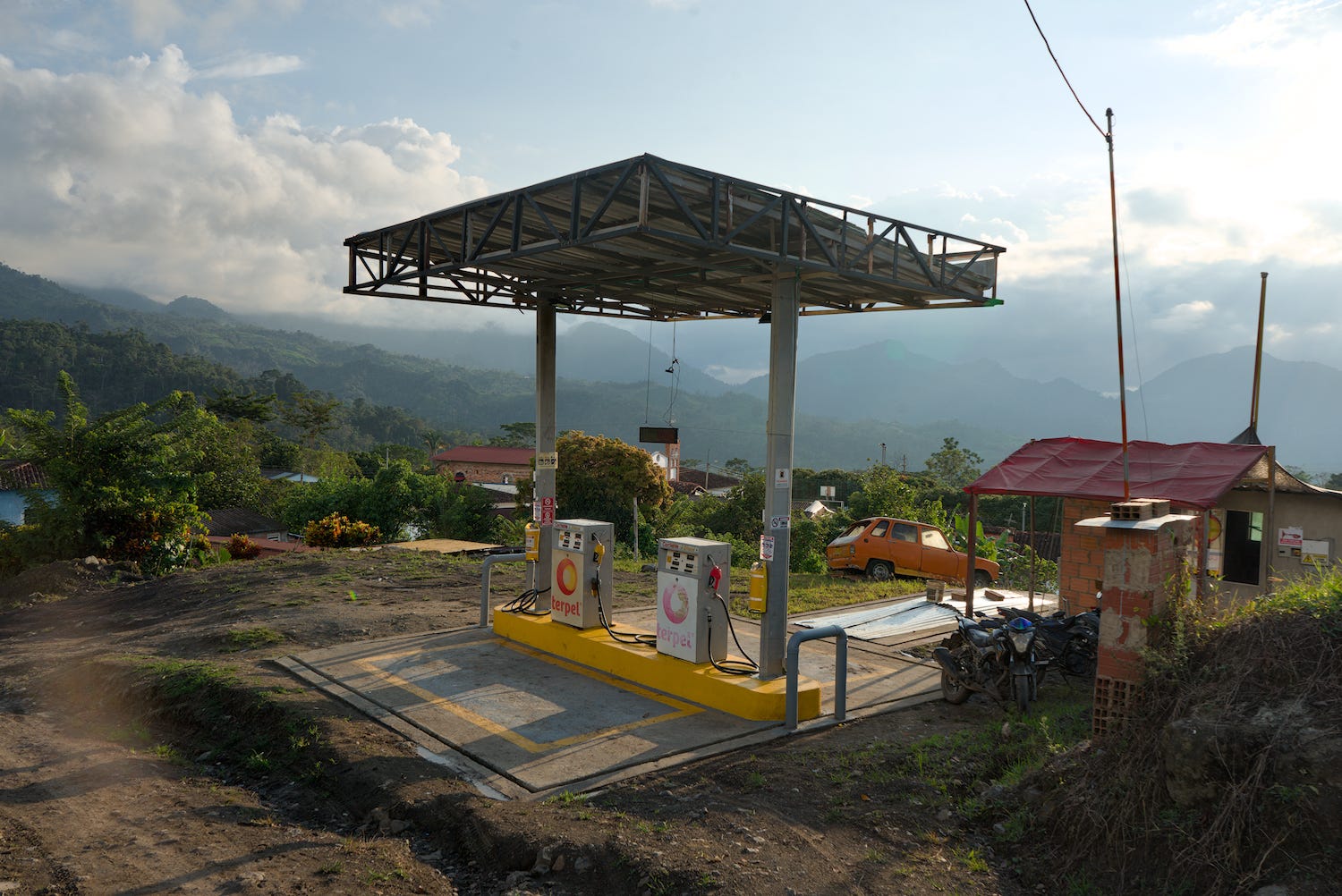
For two days, we battled up off-road mountain passes, seeing nothing but jungle. Below us, the Suárez River cut through the green swells of Colombia’s Eastern Cordillera. The rising sun caressed the water’s surface, sending clouds of condensation into the air.
Our bikes, loaded with gear for a year’s journey, slipped and slid on the clay-covered rocks. By 10 a.m., the merciless heat and humidity made every pedal rotation a slog.
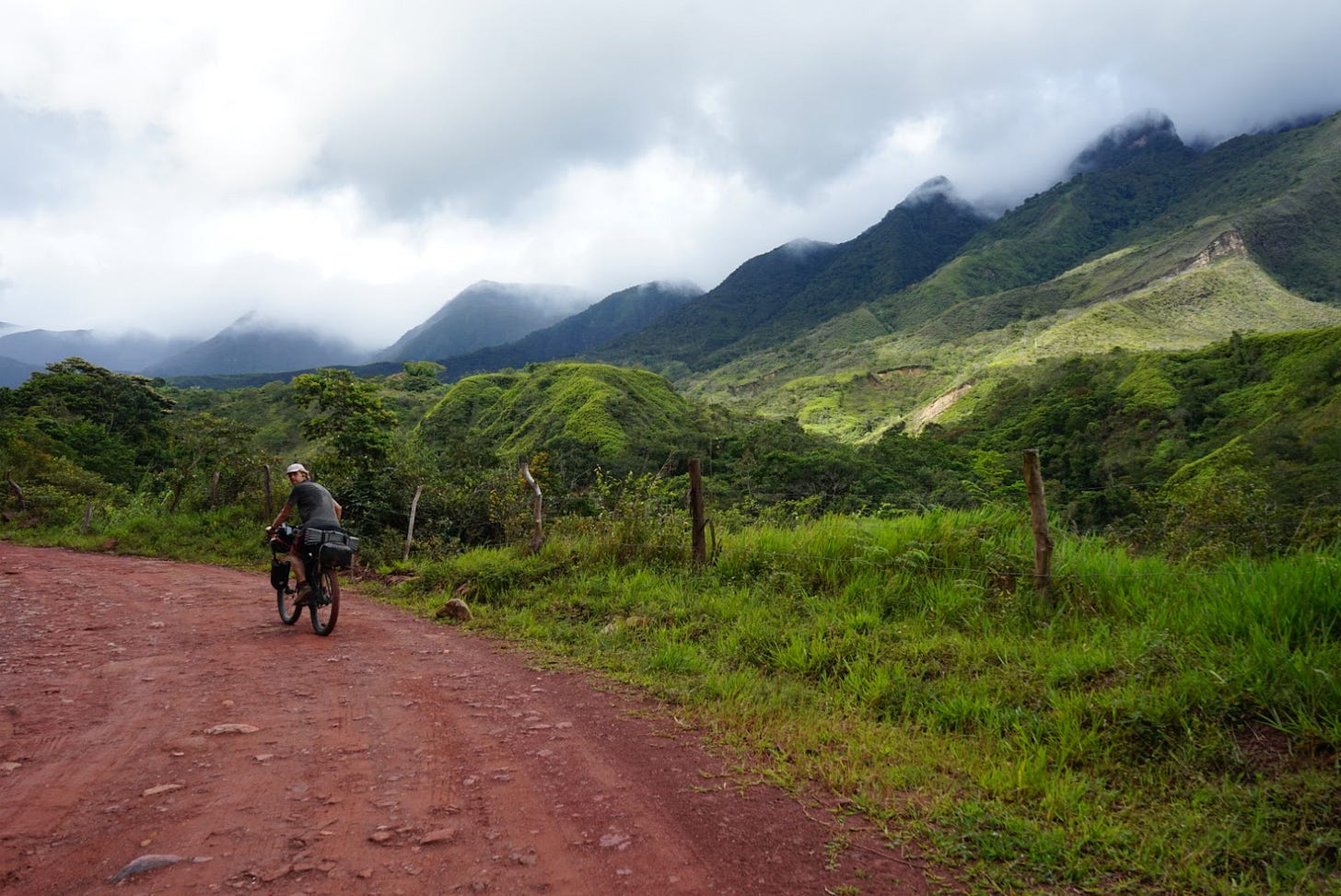
As we turned a corner, the red clay path became cobblestone, opening onto rows of small, red-tile-roofed houses. The scene resembled a medieval European village, save for the shiny orange gas station at the town’s entrance—its parking lot the only paved surface for miles.
The air is fresher here, at 1600 meters in altitude, and the sun less punishing.
People walking the stone streets greeted each other and turned to stare at the mud-covered foreigners cycling past.
This town – Contratación – was meant to be just a brief, lunchtime stopover. But, after the oppressive heat of the morning cycle, we found immense relief in reaching it – and decided to stay a while.
Though I didn’t know it yet, our relief was a faint echo of that felt by the town’s founders.
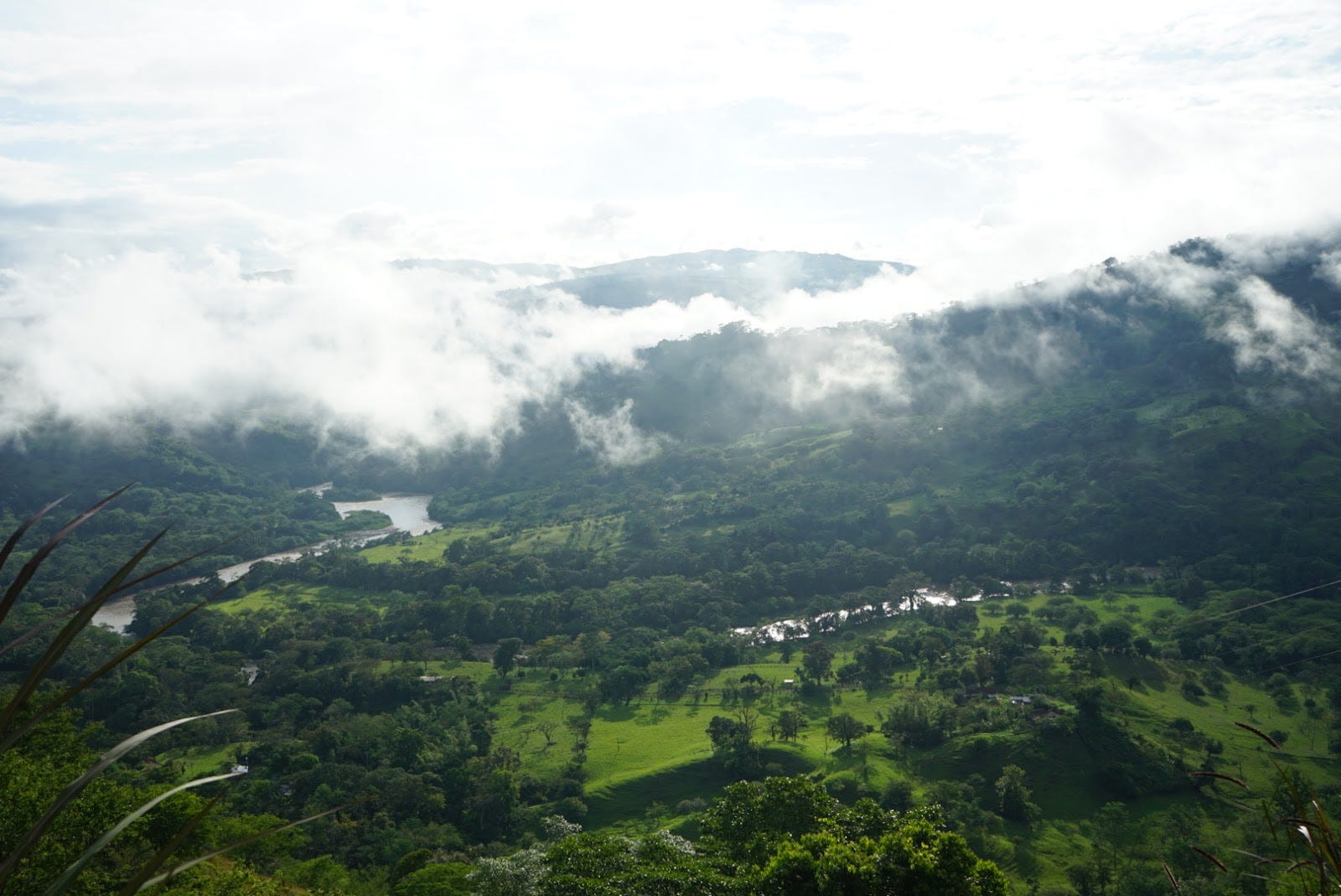
Nearly two centuries earlier, another group of travelers had made this same journey. They, too, had struggled through the jungle, their bodies weakened not just by the heat but by a disease that marked them as outcasts.
They were “lepers”, driven out of their homes by townspeople who believed their affliction was not only highly contagious but also God’s punishment for sin. At first, the exiles tried to settle on the banks of the Suárez River, but the same heat and humidity that hung over our climb made the pain of their skin sores unbearable.
So, they sent the healthiest among them to seek refuge higher in the mountains. What they found was a forested valley where Contratación, a tiny trade post, stood protected by peaks on all sides. It was a place so remote that even the air felt different—cleaner, cooler, a balm to their ravaged bodies.
They carried the sick on stretchers along the same rough mountain passes we had labored to cross on bikes. Each step must have been a battle, and I imagine that my surge of relief upon reaching Contratación was only a pale echo of theirs when the mountains finally parted.
For these early settlers, Contratación was a sanctuary: a place where they could live free from fear and where the remoteness acted as a barrier to the world that had rejected them.
But it was also a place of misery, where the sick succumbed to death amidst neglect and ruin.
By 1861, the regional government officially recognized the settlement as a leper colony.
In the early 20th century, the national government confined existing residents and forcibly transported others there, transforming Contratación into a de facto open-air prison guarded at all connecting paths. While theoretically responsible for patient care, the support provided was woefully inadequate.
A government administrator who visited in 1864 documented the dire conditions, writing that he found “No beds, no furniture, nor blankets to hide their nakedness. Nothing more than a roof and walls where misery believes to find shelter against the elements.”
Showered and fed, we left our bikes behind and hiked into the surrounding mountains, following stone slabs that form a stairway into the clouds. Thick mist enveloped everything as the steps emerged alongside tall pines.
We followed the winding stairwell for over a mile to the Santuario María Auxiliadora, a shrine to the town’s patron saint — the Virgin Mary — built in grand European style.
The late 19th century brought priests of the Salesian order from Italy who sought out Contratación to care for the sick. A plaque on the monument proclaims gratitude for the church’s work with the community. Their influence created this apex of colonial architecture amid the Colombian Andes.
But alongside European aesthetics came a rigid biblical morality.
At the top of the stairs, a dirt path leads away from the stairwell and the Virgin Mary towards a darker history – El Puente de Suspiros – the Bridge of Sighs.
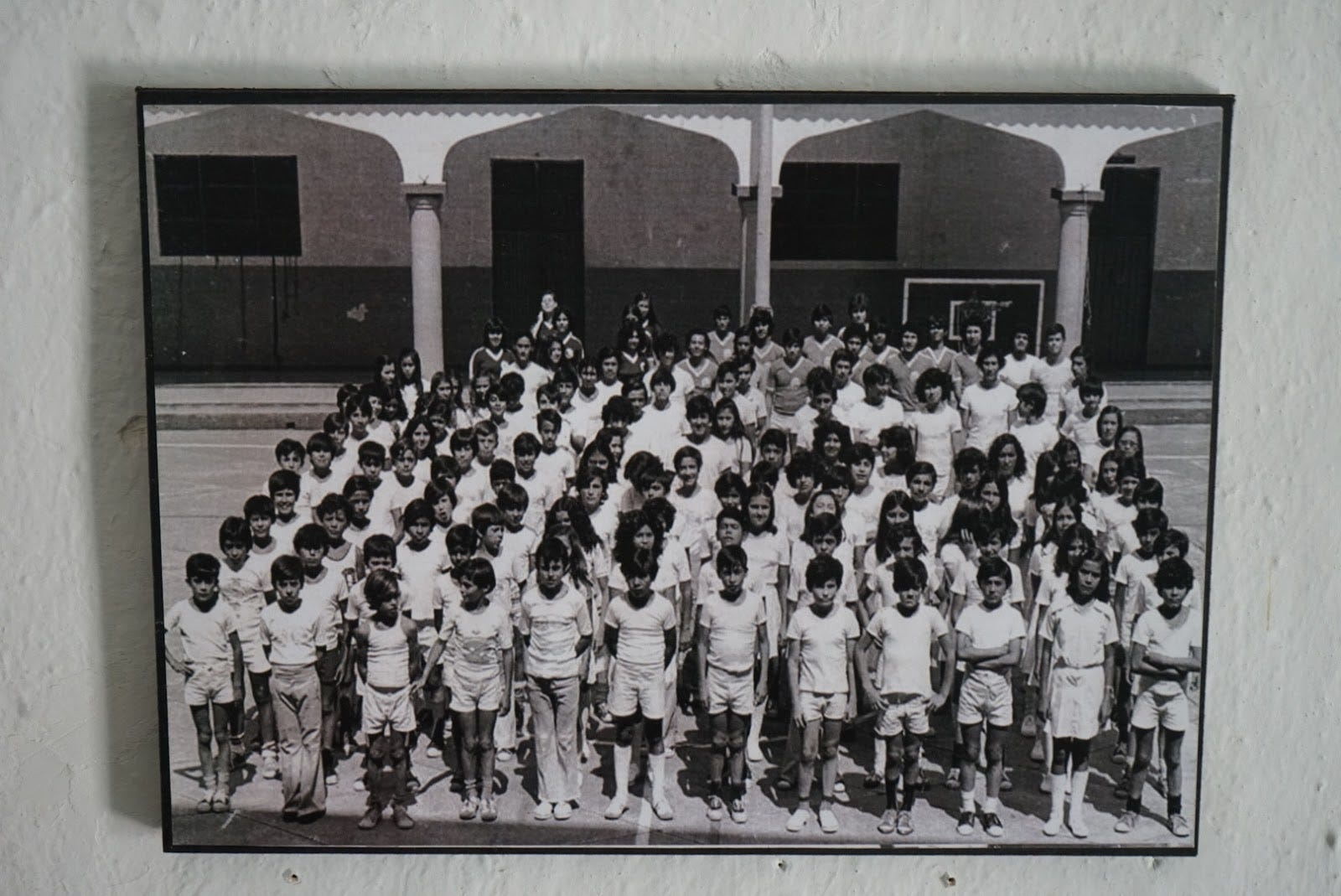
Wilson Raúl, a local historian whose grandparents were forcibly exiled here, describes Contratación as a living example of magic realism, where contradictory realities clashed.
Official policy mandated strict segregation: lepers couldn't leave, healthy people couldn't enter, and intermarriage was forbidden.
Reality proved far more complex.
Raúl’s father had leprosy while his healthy mother was brought to town to be raised by her sick grandmother. Their forbidden union formed one of many "mixed" families that defied regulations.
Such family arrangements became even more complicated after 1927, when the government prohibited lepers from raising healthy children. Salesian priests built orphanages in neighboring towns, where children born in Contratación were taken—often by force—to prevent "contagion."
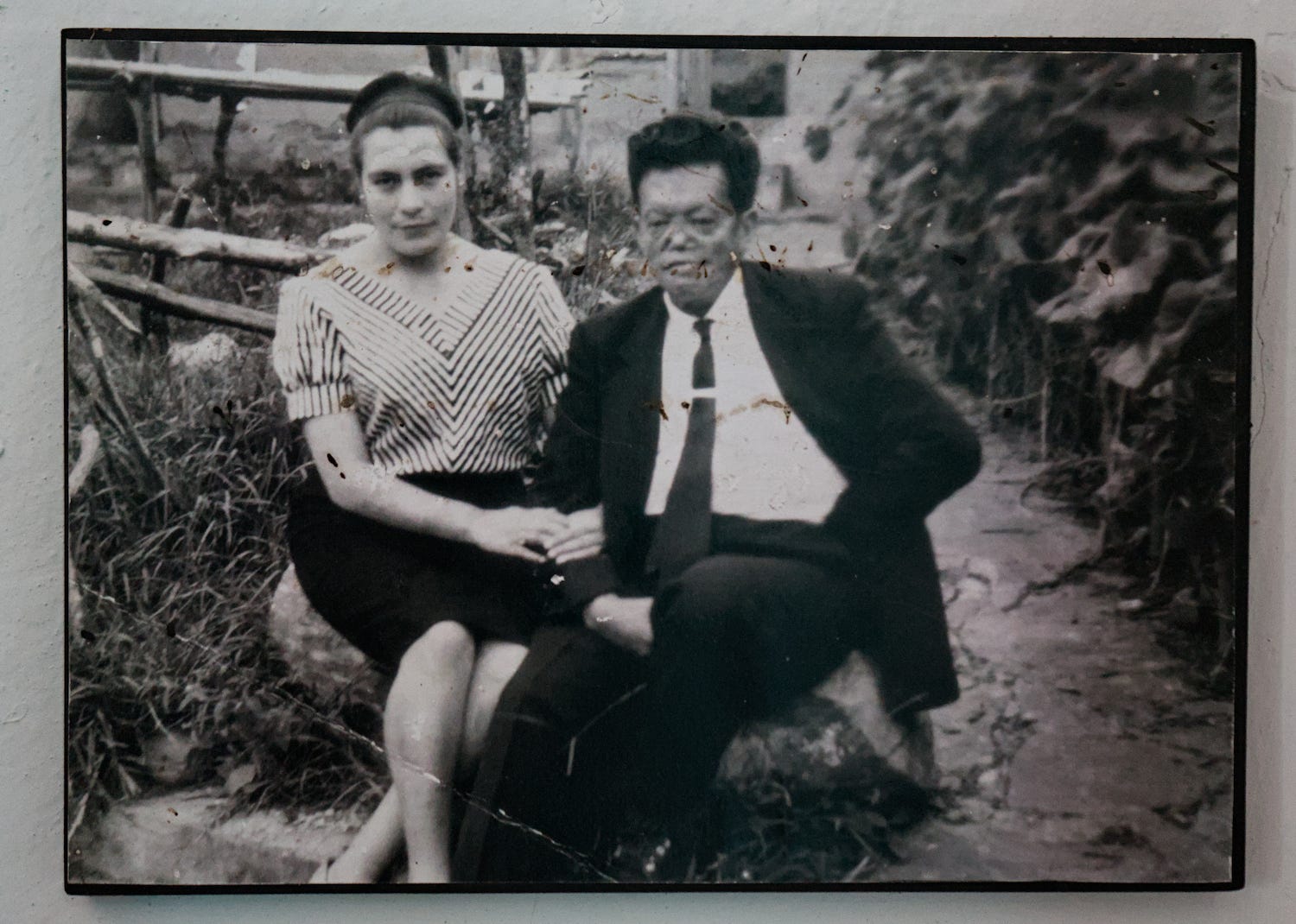
The Bridge of Sighs got its name because parents were not allowed beyond that point – it is where they had to say goodbye.
"This town was a place of much pain, much sadness, families separated from their children," Dr. Norma Constanza, a physician whose grandparents were exiled in Contratación, said.
No one knows exactly how many children were abducted, but old black and white photos show hundreds of young boys and girls posing in front of orphanages. Dr. Constanza’s uncles were among them.
Still, those who had leverage fought to keep their kids, and, in Contratación, leverage came in unexpected forms.
Musicians' children rarely ended up in orphanages because their parents' talents were valued at parties hosted by the town's elite.
"If they wanted the musicians to play – they needed to repay the favor,” Raúl explains.
But not everyone had clout.
“Some kids never knew their hometown nor their parents,” Raúl told me. “It destroyed whole families.”
In many cases, that damage was irreparable.
When an earthquake brought the boy’s orphanage crumbling down, the head priest told the children to run down to Contratación and find their families. But their religious education had instilled the boys with an image of a blonde, blue-eyed Virgin Mary as their mother.
“So when they met their real mothers – women with dark skin often deformed by their disease – it was a brutal shock,” Raúl told me.
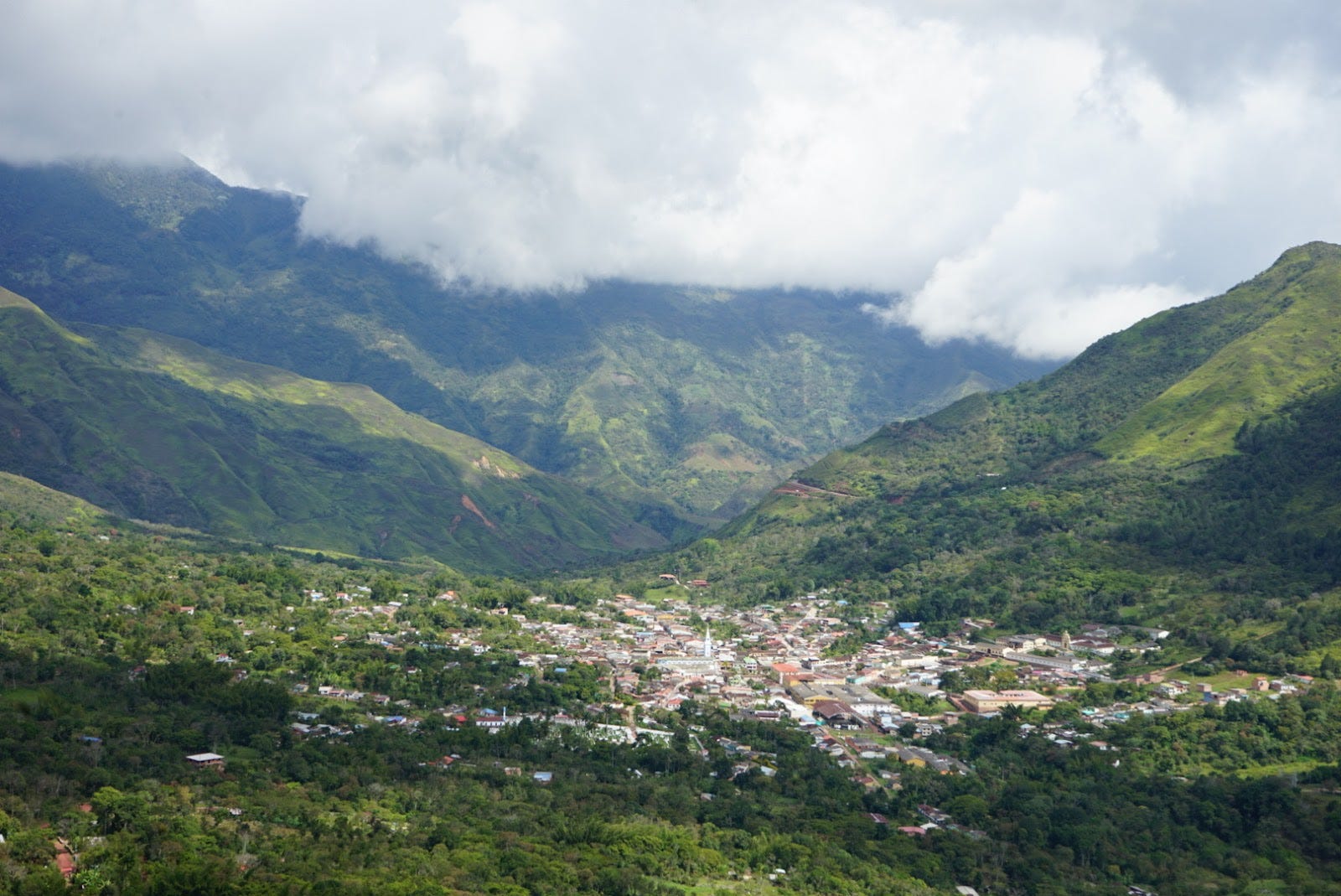
Stumbling down from our hike to the Virgin Mary, we came across teens roaming the streets in Italian carnival masks. The town square, too, was alive with energy. A man in his 70s hawked homemade ice cream, and families and friends gathered in little clans to stake out spots along the sidewalk for the coming parade.
Contratación is small—about 3,000 people—and it seemed like every living creature was here, either watching or participating in the parade. Even the stray dogs joined in.
The parade itself was impressive, important town figures led the way, decked out as characters from “100 Years of Solitude”, that classic by Marquez that defines Colombian literature both at home and abroad. They were followed by two types of dancers – traditional and modern. Contratación has no dance school, and though self-taught, their choreography was impressive.
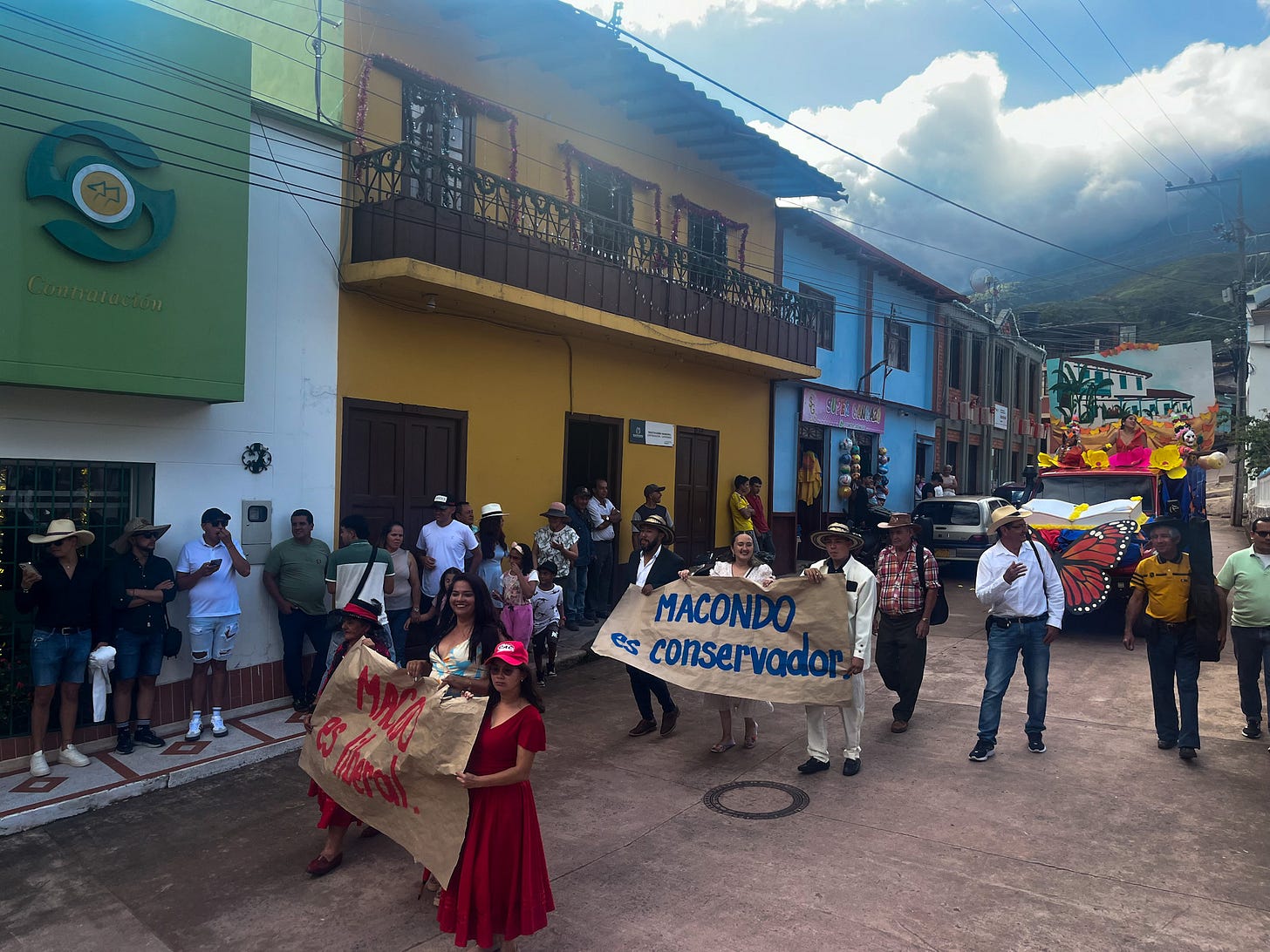
The cultural richness I saw around me is no accident.
Even as it was made to be a place of exile and isolation, Contratación became a cultural breeding ground where European art and literature brought by the priests mixed with regional traditions from all over Colombia brought by the exiled lepers.
Resilience took the form of art here, and we had arrived in the middle of the December festivities, called the carnival of Matachita, when both are celebrated.
“Art became a powerful tool of hope in a town closed off and condemned to isolation,” Raúl said, explaining that he grew up at a time when few Colombian cities had theaters, but in Contratación, they had one that put on a different show every month.
“Even today, every other person here is a painter, a musician, a dancer—there’s so much artistic talent.”
But even though Contratación’s cultural traditions are a source of pride, they also carry the weight of history.
The carnival of Matachita is celebrated in other villages, but they refuse to acknowledge that the tradition comes from Contratación. Anything associated with the town is still seen as contaminated by its past as a leper colony.
And Contratación’s residents know the stigma their town carries. Raúl’s parents registered him as having been born in Socorro, a town 30 miles away, to protect him from discrimination. “They didn’t want me to be tainted with the idea of leprosy,” he said, “even though I never had it.”
Yet, as I watched the parade, I couldn’t help but marvel at the town’s resilience and joy, despite ongoing discrimination from the outside. Raúl felt it too.
“It’s like a social experiment. What happens if you take thousands of people, take away their civil rights, forbid them to marry, make them use a different currency, and surround their village with police guards?” he mused.
“And what happened was that people, who were sent here to die, decided to throw a party instead.”
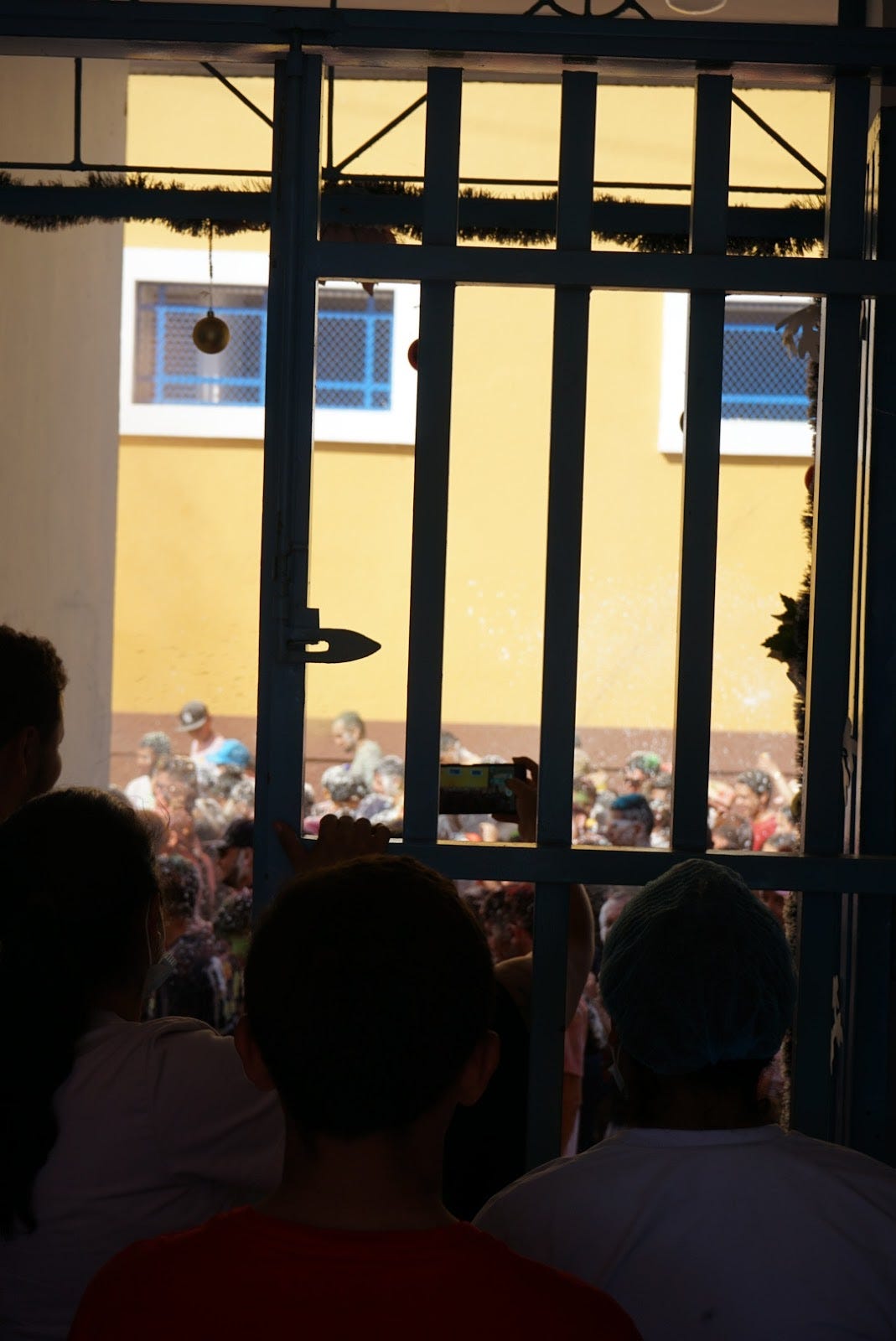
The day after the parade – December 31 – I wandered down to the Contratación Sanatorium in blind hope that anyone, doctor or patient, may be willing to speak to me on New Year’s Eve.
In 1961, the Colombian government officially ended its policy of isolating those with leprosy and separating children from parents. Today, Contratación houses one of the country's two leprosy treatment centers.
The Sanatorium is a refuge for patients who arrive from all over Colombia seeking relief from both the physical and emotional toll of Hansen’s disease. Yet, in many ways, it is a paradox—a place of healing that shouldn’t need to exist.
The atmosphere was festive and, it turns out, my worry was for nothing. I spoke to a dozen patients and a handful of administrators. Angela – the Hansen’s patient getting ready for New Year’s Eve with her friend – is one of them.
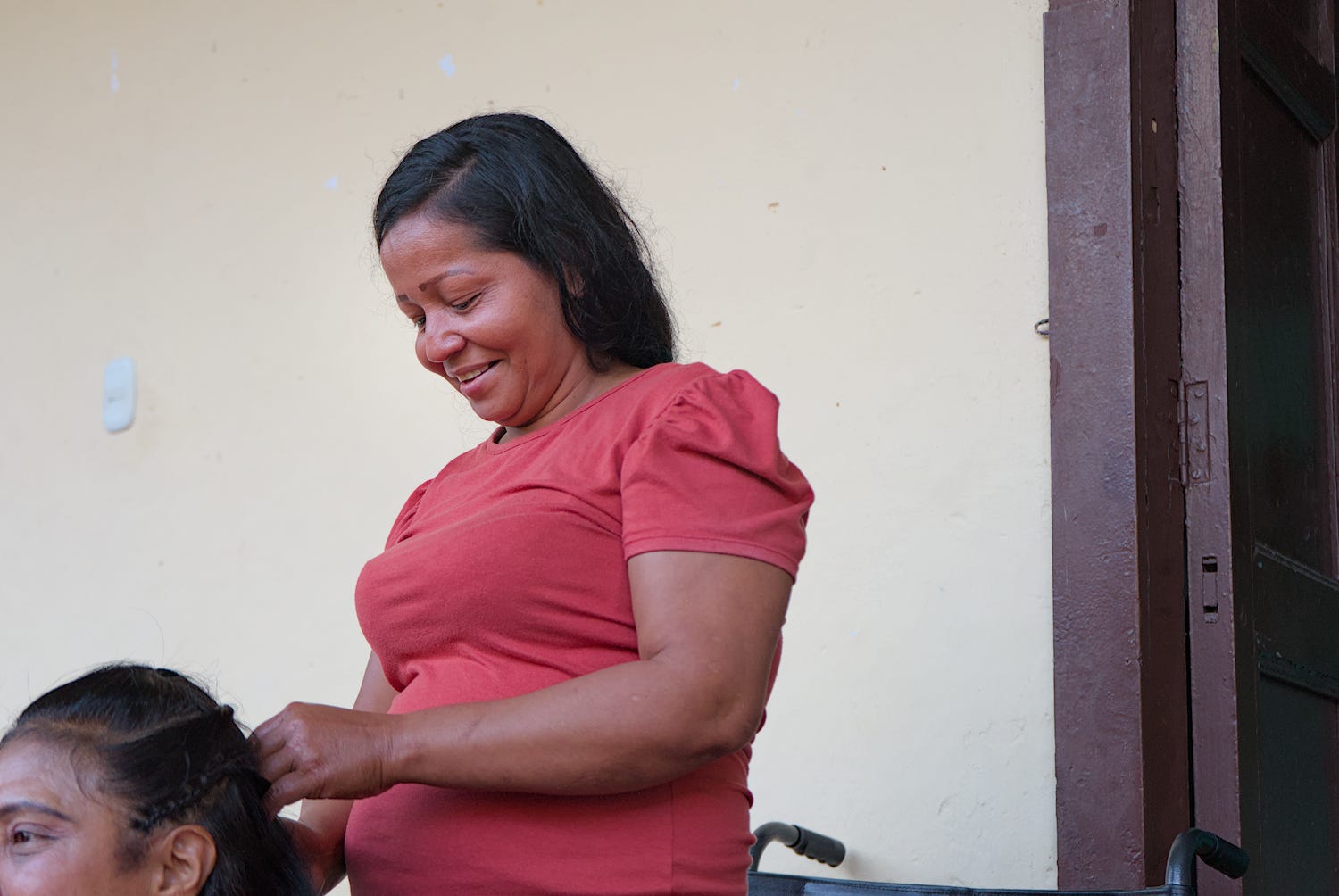
We sat down to talk in the women’s wing of the Sanatorium – an airy building in Spanish colonial style – which today houses the overflow of male patients (men are disproportionately affected by Hansen’s disease), as well as women.
Angela’s hands moved quickly, expertly, through her friend’s hair, and she barely looked at me as she recounted her life story.
She was born in Colombia, but at 18, moved to Venezuela where she worked at a jeans factory to make ends meet. It’s there that doctors believe she caught Hansen’s — the disease is more widespread in Venezuela.
Often, the first symptoms of leprosy are hair loss. About five years ago, Angela’s eyelashes and eyebrows fell out.
“I didn’t think anything of it. I mean—I can draw on my eyebrows, and if I want eyelashes, well, I can put on fake ones, can’t I? she told me.
Then, painful ulcers opened on her feet. But they were small and doctors diagnosed them as fungus. The ulcers didn’t respond to any of the prescribed treatments, but they also didn’t grow. Not until Angela tried a “natural” remedy—salicylic acid.
“[The acid] burned the ulcers, opened up wounds—and they became infected,” Angela remembered. “It was hell.”
From there, Angela’s condition only worsened. As the ulcers spread across her whole leg, she began passing as much time in clinics as at home. She was passed around from doctor to doctor and misdiagnosed with a dozen skin conditions before one dermatologist finally thought to run advanced exams that included a test for leprosy.
By the time Angela was diagnosed, treatments for skin conditions she didn’t have had made her ulcers unbearable.
“I had no life, I had no peace—the pain was so intense,” she said. “I was in constant pain.”
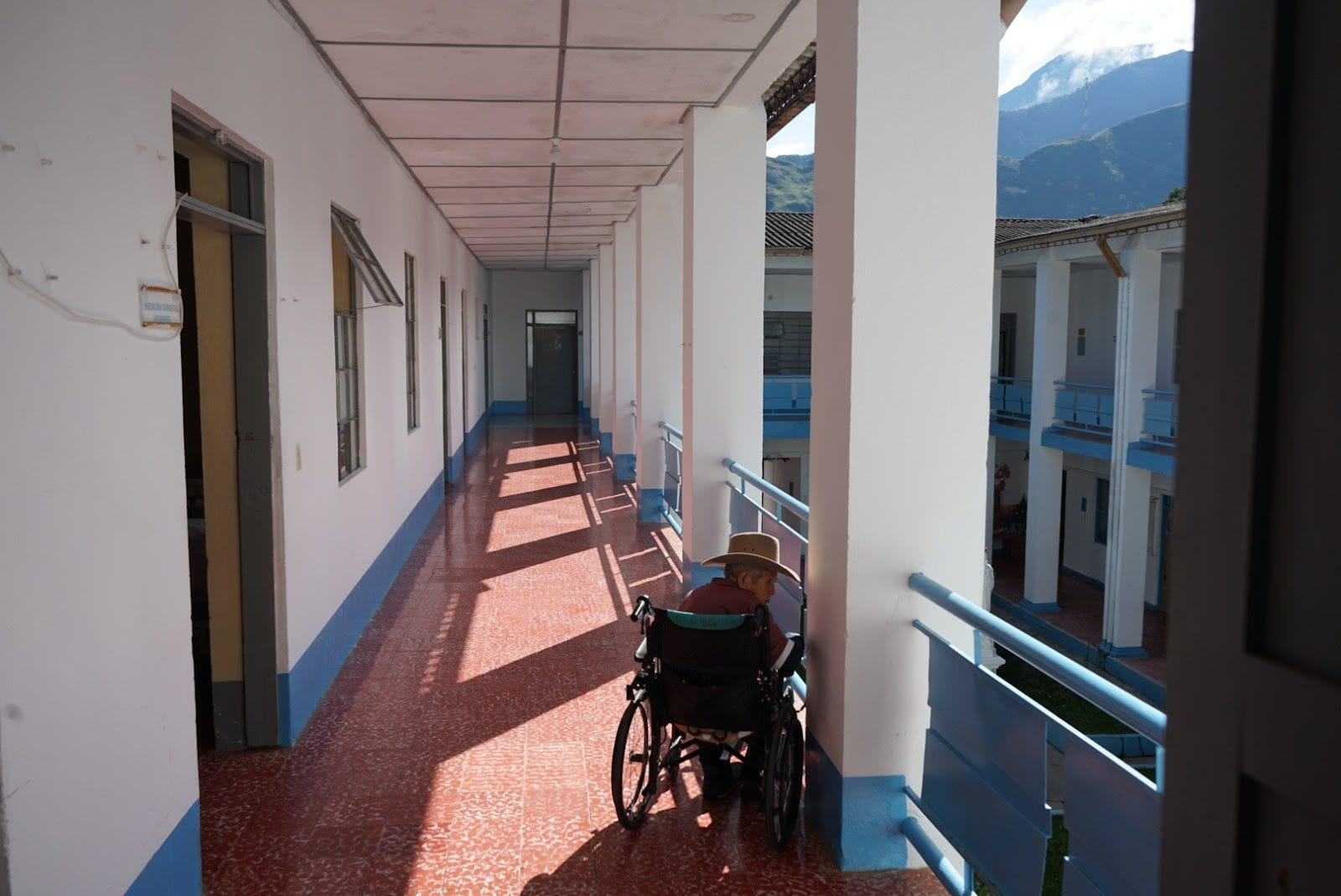
Every patient I spoke to at the Sanatorium told some version of this story: misdiagnosis, confusion, delays of crucial treatment, and pain.
Though the World Health Organization declared its elimination as a global public health goal in the year 2000, Hansen’s disease remains “one of the world’s leading causes of preventable disability,” according to the Leprosy Mission International, an NGO. Officially classified as a Neglected Tropical Disease (NTD), around 175,000 new cases are reported each year.
“Doctors in Colombia don’t know anything about leprosy, so they don’t recognize it,” Dr. Constanza told me. “By the time patients are correctly diagnosed, they’ve often suffered for years.”
Early detection is among the Sanatorium’s primary goals. Medical teams travel across Colombia, searching for cases in communities where leprosy is most likely to spread. “We look for people with long-lasting skin rashes that don’t respond to treatment,” Dr. Constanza explained. “If we find the bacteria early, we can treat it before it causes disability.”
But the medical teams’ resources are limited and they can only do so much without better training for doctors around the country.
"In my university, we didn't learn about it at all," Dr. Constanza said. "Leprosy is treated as a distant, almost mythical disease.”
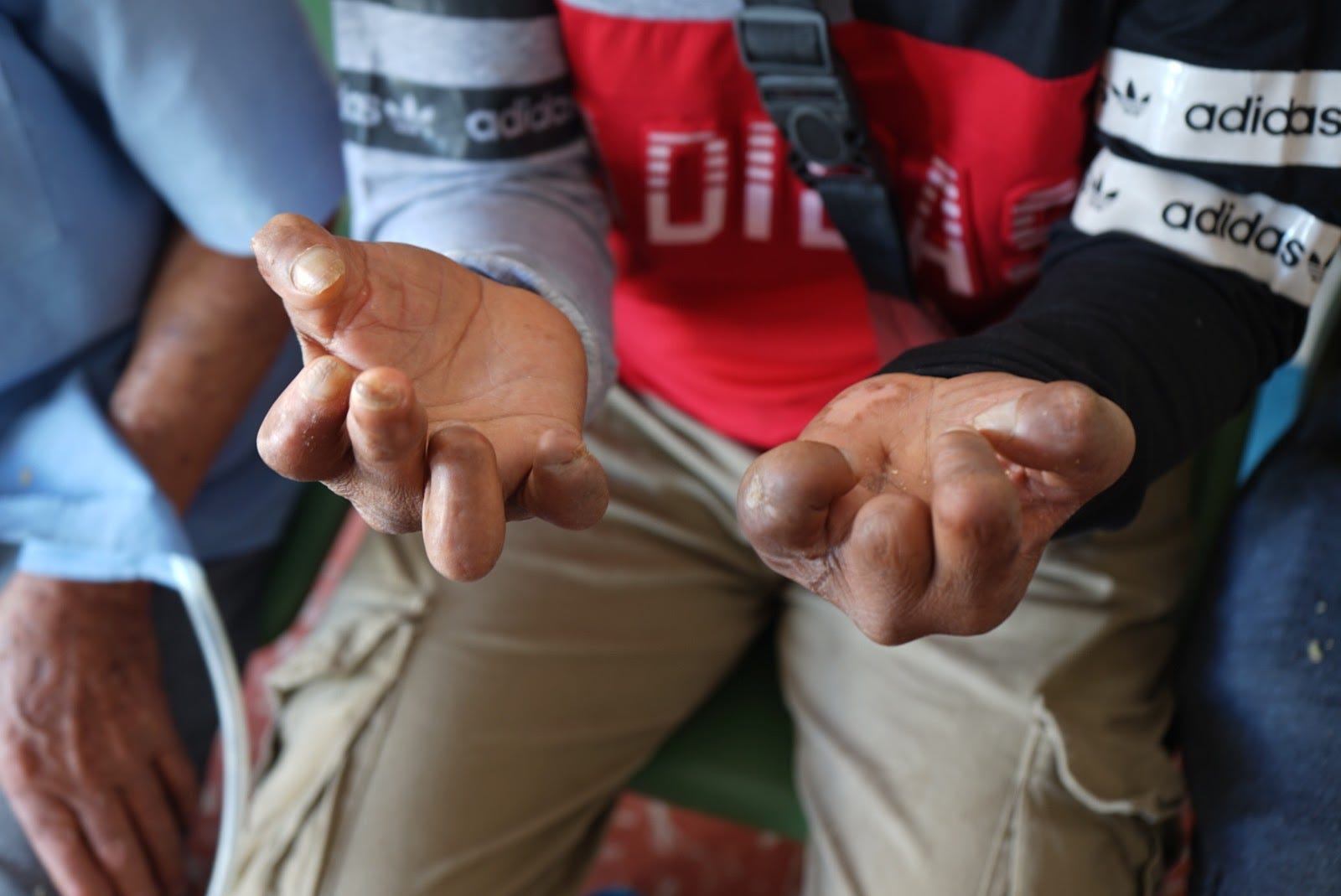
Since coming to the treatment center in Contratación, Angela’s ulcers have diminished, contained again to just her feet. She’s also found community and support. “People here are very approachable, very kind,” she told me, pointing to her friend and laughing a bit.
But when I asked Angela to tell me more about her arrival, a sudden sob escaped her, and the spell was broken. This was not a schoolgirl. This was a heartbroken mother trying to hold it together.
Angela arrived in Contratación right as the holiday season—the most important of the year in Colombia’s religious and family-centered culture—began.
“I agreed to come to this treatment center, but only in the new year,” she said. Tears streamed down her face—her friend’s hair forgotten.
Angela’s doctors decided that she could not wait until the new year. By November, her condition had worsened and, while she was in treatment at a local clinic, her doctors made the decision to move her to the specialized hospital in Contratación—ready or not. She didn’t even have an opportunity to gather clothes or say goodbye to her family, she said.
“I have small kids. Usually, I take them to Christmas prayers and gatherings. We make the house festive together,” Angela told me. “This year, they did nothing.”
She didn’t know when she would see her family again.

I bumped up against this bittersweet mix of emotions in every corner of the Sanatorium.
Many of the patients have experienced brutal rejection by society in their hometowns: once they are diagnosed, friends disappear, lovers leave, and even cafes leave their coffees at the door, refusing them even the smallest bit of human contact.
This dehumanization spurs the progression of their symptoms since leprosy is exacerbated by stress.
In contrast, when they arrive in Contratación, a warm, accepting community greets them, eager to shake hands and give hugs. This, as well as the medication, allows them to begin to heal.
Yet – in a way – they remain isolated not by force but by poverty.
“Leprosy thrives in overcrowded housing, dirt floors, inadequate roofs—these are the environments where the disease spreads most easily,” Dr. Constanza told me. The government subsidizes treatment in the Sanatorium, and some patients even receive disability pay while in treatment. Yet, most remain unable to afford the trip out of remote Contratación to see their loved ones who, in turn, cannot afford to come here.
Universally, when I asked those being treated for leprosy in Contratación what their New Year’s wish is, they say, “to see my family again.”
And so, Contratación cannot escape its contradictions, remaining both a refuge and a prison.




